If you use mushrooms as medicine, you’re not the first person to think of the idea.
Medicinal mushrooms are prized by many cultures for their rejuvenation, immunity-boosting, and overall health promotional capabilities.
But that’s just the beginning.
We now know that these mushrooms can help people like you think better, sleep better, cut down on stress and worry and even help people with allergies.
People’s lives are being changed by mushrooms!
Medicinal mushrooms are also becoming more popular in labs and clinics across the country, and more research is being conducted to find out how they work.
Mushrooms with Adaptogenic Properties
Adaptogenic mushrooms are mushrooms that can help your body adapt to changes in your body.
Every day, even if we don’t realize it, we’re bombarded with a lot of different stressors.
It could be that you have a very busy day that prevents your body from getting enough rest.
The difficulties of working in a stressful environment all day might be the reason why they are tired.
It could be because of things like weather shifts from season to season or dangerous chemicals in the air you’re breathing day-in and day-out.
In order to keep our bodies in a healthy balance, we must teach them how to deal with these “shocks.”
It’s a group of natural chemicals called “adaptogens.” They enable us to handle our stress in a more straightforward way.
Herbs, plants, and yes, even mushrooms have them.
This translates to these mushrooms helping our bodies and minds adapt to stress and return to a state of balance.
A lot of people have used adaptogen mushrooms like Reishi, Cordyceps, and other mushrooms for a long time.
Many people enjoy taking these mushrooms every day to obtain the most benefits from them in terms of their adaptogen properties. But some people will take them less often. Perhaps weekly or bi-weekly.

Mushrooms that Boost Immune Systems
When we have a healthy immune system, we have a good general sense of well-being.
If we aren’t moving around, we are more likely to get colds, the flu, and various other health concerns.
However, when the immune system reacts to exterior forces, we start to attach ourselves to our bodies, which leads to inflammation, along with other more problematic auto-immune illnesses when we do this.
For those whose immune system is out of whack, it’s going to be difficult to cope. But there are some ways to use mushrooms for immunity.
If you think about it, the way these shrooms impact the immune system is one of the best things about medicinal mushrooms.
Mushrooms, like adaptogens, may help your immune system work better when it’s not working well and calm it down when it’s not working well.
Putting your immunity on auto-pilot is something that they can do.
In mushrooms, tiny chemicals called polysaccharides, which are found inside the fruiting body, have a natural affinity for cells in our immune systems. This is why this works.
History of Medicinal Mushroom Use
Researchers found the remains of an older man who had been frozen under the ice along the Italian/Austrian border in 1991.
Eventually, he was named “Otzi.” He is dated to have lived approximately 3300 BC.
He was a wanderer, and he wouldn’t have had the desire to be weighed down by unnecessary things.
To make things even more interesting, he had two kinds of mushrooms among his little things.
Tinder Fungus (Fomes fomentarius), a fungus that was utilized as a fire starter in the past, was the first. An alpine tourist might find this useful.
This isn’t the only kind of mushroom he had in his bag. He also had a Birch Polypore (Piptoprus betulinus), which is a strong medicinal mushroom that has the ability to fight parasites, reduce inflammation, and fight bacteria.
If Otzi used this good fungus to get rid of his whipworm, it’s possible that that worked.
This reveals that people knew about and used medicinal mushrooms as far back as 5000 years ago.
Cultures studied globally have used medicinal mushrooms for quite some time. Thus, it’s safe to say that this practice – of using medicinal mushrooms – has been going on for a long time.
Almost two thousand years ago, Reishi (also known as lingzhi) was used in Traditional Chinese Medicine. Mushrooms are a big part of this type of traditional medicine.
Known as the “Mushroom of Immortality,” Reishi, was once only available to nobles and emperors in ancient Chinese society. Now, anyone can get their hands on them.
There are a lot of medicinal mushrooms grown in China, which plays a big part in getting these amazing mushrooms to people all over the world.
Types of Medicinal Mushrooms
Medicinal mushrooms and edible mushrooms are not the same thing.
Yes, some mushrooms can be both.
A lot of people think around 1.5 million different kinds of fungi exist in the world right now.
Fungi are believed to make up nearly a quarter of the world’s biomass.
Among all species, only a very small number are thought to be good for people, and just a few have been studied in great detail to find out how good they are.
Obtaining the title “medicinal mushrooms” is, without a doubt, a tough achievement.
Because medicinal mushrooms have a lot of good things going for them, let’s look at what they can do for you.
Check it out a little bit more.

1. Cordyceps (C. Sinensis and C. militaris)
Cordyceps, also known as an “Energy Mushroom,” is a type of mushroom that can help you stay awake.
Cordyceps can be used for a lot of different things, like improving athletic abilities. But there’s more to these special mushrooms than that. Here’s what consumers expect from ingesting Cordyceps:
- Sexual functions
- Increased strength and energy
- Better Lung capacity (asthma and bronchitis)
There’s a Cordyceps species that grows naturally in the highlands of Tibet. It’s quite unique, with an odd life, and most other mushrooms don’t compare.
These mushroom spores attack the brains of a specific species of caterpillar. The caterpillars will turn into squirming zombies once these fungus spores get into their brains.
The spores compel the caterpillars to find a good place to die. Then, a Cordyceps mushroom fruit grows in their head and thrives on the bugs’ bodies.
There is one big difference, though: humans aren’t impacted by these spores in the same way. They don’t have to be afraid of becoming zombies.
Cordyceps, on the other hand, has the opposite effect on people, giving them more energy, endurance, and athletic ability.
C.sinensis, which is also called the “caterpillar fungus,” needs insects to grow and has evaded commercial efforts to grow it. It has to be acquired and gathered in the wildnerness.
It’s a shame, but it’s also very rare. As a result, it’s very expensive.
Cordyceps militaris, a type of Cordyceps that is both vegan and insect-free, can be easily grown on natural substrates.
C.militaris has been observed exhibiting have the same qualities as the desirable C. Sinensis, but these come at a much lower price.

2. Reishi (Ganoderma lucidum)
The “Mushroom of Immortality,” as it is called, is a type of mushroom. Reishi is one of them.
It’s been used to help people with:
- Immune system manipulation.
- Chemotherapy side effect reduction.
- Energy and mental acuity boosting.
- Anxiety reduction and more effective sleep patterns.
When it’s new, the fruiting body is a beautiful red color, and it looks like it was just cleaned.
Besides, it’s also called the “varnished conk.” For a good reason, too.
Reishi is, without a doubt, a unique, well-studied, and well-known mushroom.
But not for the taste.
If you were to take a stroll out into the woods and eat a piece of one of these shiny mushrooms, you’d probably wish you hadn’t.
That’s because Reishi has a rough texture like the wood it thrives on. Not to mention, it’s very bitter.
Even though Reishi isn’t good for cooking, the same things that don’t make it good are what make it a powerful herb for treating illnesses.
Reishi can help people with allergies, which is a well-known way it can be used.
Some people who have allergies say that using this bitter fungus every day has helped them toss their over-the-counter antihistamines aside.
Reishi also offers a desirable calming effect that may help people who have anxiety or other long-term stress.
It’s also helpful as a mild sedative for those who are having trouble sleeping.
Reishi is traditionally made by steeping the mushroom’s fruiting body in boiling water for a long time, which makes a strong-tasting tea.
Powders that have been pre-pulverized and encapsulated are also available, so you don’t have to deal with the unpleasant taste of Reishi.
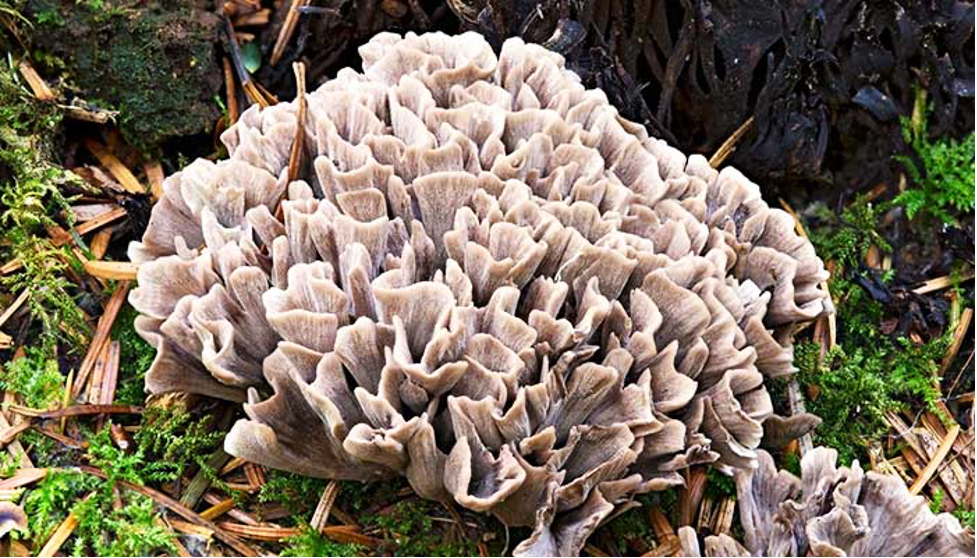
3. Maitake (Grifola frondosa)
Maitake mushrooms, also known as “Sheep’s Head” or “Hen of the Woods,” has its place in the world of medicinal mushrooms. This fungo is used to:
- Strengthen the immune system.
- Treat gastrointestinal problems.
- Maintain a healthy blood sugar levels.
- Assist with various forms of cancer treatment.
It’s not only great gourmet food (ask your chef friends). But it’s also a superfood that almost everyone should include in their diets.
Beta-d-glucans are good for the body, and they come out of the mushroom fruiting body when hot water is used to extract it. Maitake has a high concentration of them.
There is a lot of evidence that polysaccharides can help people with diabetes control their blood sugar levels, which in turn can help people with diabetes lose weight and improve their cholesterol levels.
This mushroom could be good for people who have cancer.
MD-fraction is a polysaccharide found in maitake that has been shown to help the immune system deal with chemotherapy.

4. Shiitake (Lentinula edodes)
One of the best-known gourmet mushrooms is Shiitake. It can be found in most supermarkets, and it costs a lot.
Only button mushrooms are grown more than shiitake mushrooms are grown annually, making them some of the most commonly grown on the planet.
Shiitake is a common fungus in Asian food, but it’s also a desirable medicinal mushroom.
Shiitake mushrooms are used for a wide range of medical reasons, including:
- To promote skin that looks good and is healthy.
- Help for liver functionality.
- Controlling cholesterol.
To treat stomach cancer, Japan has approved the use of a very pure polysaccharide made from Shiitake mushrooms that is very pure.
Tests show that another chemical found in Shiitake, called eratidenine, can help people with high cholesterol levels.
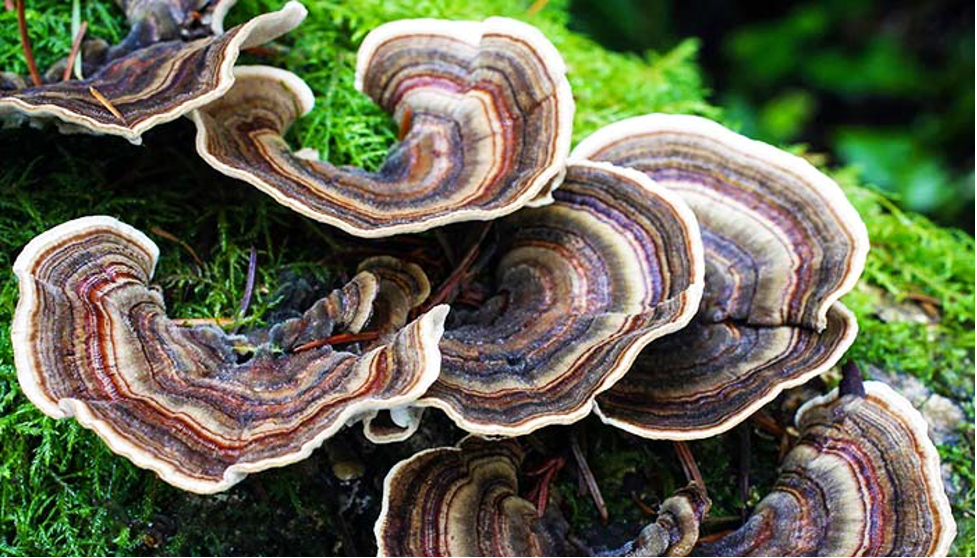
5. Turkey Tail (Trametes Versicolor)
Coriolus Versicolor, or turkey tail, is a polypore that looks like a turkey tail. It has velvety crowns and color striations.
It looks just like the tail of a turkey.
Not many people think of it as a “gourmet” mushroom because it’s too rough to eat fresh or dried.
Most of the time, hot water is used to get the polysaccharides PSK and PSP out. These have been used in medicine to boost the immune system and help with existing cancer treatments.
As polysaccharides, researchers have revealed have an ability to boost immune cell production and improve cancer patient outcomes.

6. Chaga (Inonotus obliquus)
As a fungus, Chaga has impressive antioxidant concentrations and is used for the following:
- Lessening damage caused by free radicals.
- Detoxifying the body.
- Boosting the immune system.
- Reducing stress and promoting relaxation.
People also say that Chaga can help with stomach problems. It also exhibits antiviral properties.
Rather than a mushroom, the Chaga mushroom is called a “sclerotium.” This is a large concentration of Chaga mycelium and wood attached to birch trees it thrives upon.
Also, it doesn’t look much like a traditional mushroom at first glance.
Chaga is a parasitic fungus that grows on the exterior of birch trees and turns into a hard black mass that is very hard.
Inside of a Chaga mass is lighter brown or orange.
This fungus is way too hard to eat. Thus, if you want to use Chaga, you need to crush it into a fine powder before extracting it with hot water, alcohol, or the two.
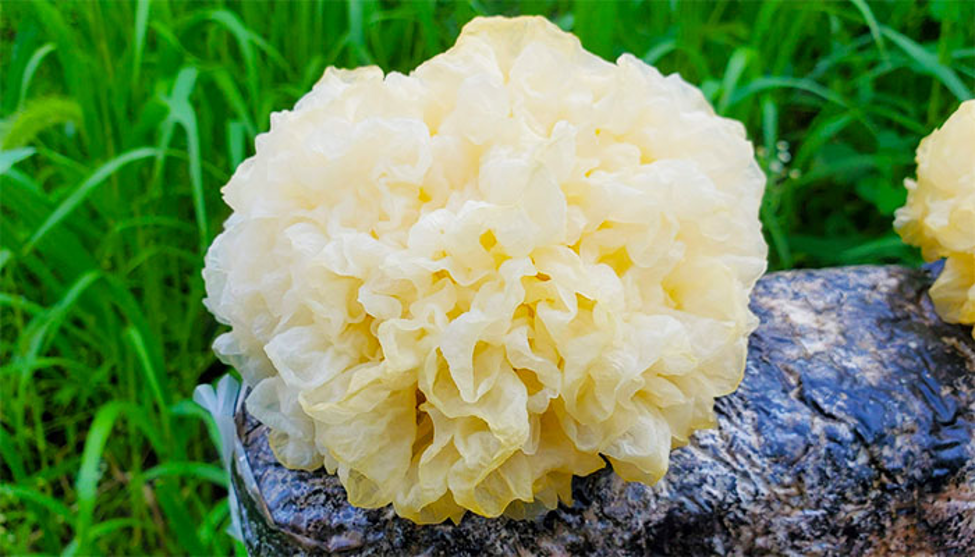
7. Tremella (Tremella fuciformis)
There is a mushroom called Tremella that is called “beautiful.” It has been used to prevent aging and promote skin health for a long time.
Tremella mushroom parts are excellent for keeping moisture in and protecting the skin.
Because of this, you could see it in cosmetics as well
Tremella also has properties that are believed to improve memory and brain function.
It has been found that the bioactive polysaccharides in Tremella help rats’ bodies fight off free radicals, which could make them look younger.
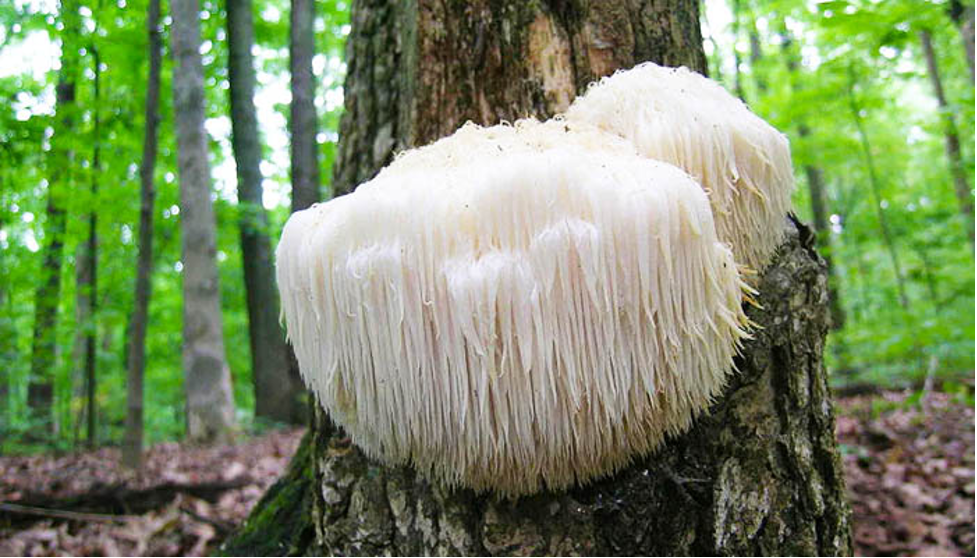
8. Lion’s Mane (Hericium Erinaceus)
This strange-looking fungus is a prime example of a mushroom that can be both a tasty food and a powerful medicine.
A lot of people know about this mushroom because it is said to help people think better.
It has been observed that Lion’s Mane can help stimulate NGF (nerve growth factor), which is important for the growth, maintenance, and preservation of brain neurons.
It also has a big effect on your body’s defenses.
Lion’s Mane is also used for its ability to help people who are anxious or depressed.
Patients in one study said they felt better when they ate 2 grams a day.

9. Enoki (Flamulina velutipes)
Enoki is another one of the most popular medicinal mushrooms, with about 2.7 billion kilograms grown each year, primarily in China.
Enoki is typically used in cooking. However, it also has some intriguing therapeutic qualities.
This mushroom has been looked at for its anti-cancer, antiviral, and allergy-relieving properties, as well as other things, as well.
Types of Medicinal Mushroom Supplements
Mushrooms, you thought they were just fungi?
People who are new to the mushroom supplements industry might be a little confused.
That’s due to the fact that there are many ways to make these supplements, as well as many ways to eat them.
But what’s more, lots of supplement companies aren’t very clear about what they’re selling.
In the beginning, it might be a bit scary to learn about all of it. With this in mind, you should figure out what’s best for you.
The truth of the matter is that some things work better for some people. But the most important thing is how well the product works.
So, if you’re planning to take some type of mushroom supplement, you need to know what you’re getting yourself into before you do it.
The following are two crucial questions to ask:
- How are the mushrooms grown? What technique of extraction is used for your supplement?

Methods of Making Mushroom Supplements
Whole Fruiting Body
You may have heard of the term “whole fruiting body.” But mushrooms can be found in many different shapes and sizes.
There are a lot of mushroom supplements out there, and the “mushrooms” that grows from trees, stumps, or logs are most likely made of what they’ve grown on.
A mushroom’s fruiting body is where the important chemicals that provide functional mushrooms their good qualities.
This is typically the mushroom component that’s usable and has been used for practical reasons in the past.
Medical professionals would collect fruiting bodies of wild mushrooms and use them to make teas long before it was possible to grow them in a lab.
The issue here is that it costs a lot to make mushroom fruitbodies. Growing these components efficiently requires growers to cultivate them at a massive scale for these grows to be economically worth the effort.
As a good thing, skilled mushroom farmers in other countries have been cultivating mushrooms for centuries and understand what it takes to make high-quality shroom products.
When it comes to mushrooms, China makes more than 85% of the mushrooms sold globally, and almost every mushroom product made using the “whole fruiting body” comes from there.
They are, without a doubt, the best mushroom growers in the world.
Myceliated Grain
The other main component of a mushroom is called “mycelium.” This is sometimes called the mushroom’s “roots.” This part is called “mycelium.”
It’s a white substance that grows and grows until it becomes a mushroom or something else.
Oh, and it looks similar to an apple tree.
Think of the fruiting body as the apple and the mycelium as the remaining portion of the tree,
We would love to eat the apple in general.
The next time you’re in the woods, pick up some moss and dig around one inch into the dirt to see mycelium. Most likely, you’ll be able to see the tiny strands of mycelium that are growing on the forest floor.
People who work in the lab can also make mycelium spread quickly in sterile conditions. Because of this, some businesses have made money.
Many manufacturers find themselves making a lot of mycelium that grows on oats, wheat, sorghum, rye, brown rice, or some other grains. This is because grain starch is a great source of nutrients for mycelial growth.
During your search for mushroom supplements, you may see the phrase “mycelium on grain.”
There is a sign that it was made with mycelium that was grown on grain, not real mushrooms. This is a very cheap way to make mycelium, which is why it can be made in the United States in small batches.
There are usually a lot of “USA grown” mushrooms that have mycelium cultivated on grain unless they are made in very small amounts. That’s why you’ll see labels that state “myceliated brown rice” and “myceliated oats” on the package.
These powders will taste and smell comparable to one another, regardless of what kind of “mushroom” was used.
This is due to the fact that the bulk of the end product is grain starch, which doesn’t have very many valuable chemicals in it, so this is why.
If a product doesn’t say how many beta-d glucans it has, that’s usually not the case.

Full Spectrum
A lot of people use the word “full-spectrum” in marketing mushroom supplements.
It looks like the whole mushroom, including the fruiting body and the mycelium, is used in this way.
In this case, it isn’t clear what this word really means. Some manufacturers use it without fully elaborating on what they’re attempting to claim the product does.
Pure Mycelium
Mycelium doesn’t have to be grown using grain sustenance to be good at what it does.
Liquid culture is another way to grow it. This is when a lot of nutrients-rich liquid is put in a lot of big tanks.
Mycelium floats in the water and thrives there.
Pure mycelium is possible to acquire by filtering the liquid. Then, it can be dried and used to create a mushroom supplement.
You get very concentrated mushroom mycelium. But it lacks the starchy fillers you’ll when it’s grown on grain.
Sometimes, it’s a good idea to make mushroom supplements in this manner.
Some mushrooms, for example, are hard or not feasible to grow, despite the fact that the mycelium is not difficult to grow in water.
There are a lot of mushrooms that can help you. Cordyceps Sinensis is a popular one of these medicinal mushrooms. However, it likes to eat insects in the wild and has evaded attempts to grow it.
There is a strain of cordyceps called “CS-4,” and its mycelium has been observed as beneficial to a person’s health as a stand-alone product.
Growing it in liquid allows for simple mushroom growth without the need for extra filters like grain.
Spores and Spore Oil
Spores, not seeds, are how mushrooms grow.
It is common for the spores to come out of the gills or holes on the mushroom fruit body’s bottom.
These spores could be very good for you if you treat them the right way.
There are spores that can be taken from the Reishi mushroom, which is a common fungus.
This is how most people get hold of the spores that come out of the fruit when it’s ready. They like to take a cardboard tube and wrap it around the mushroom fruit body.
Spores are “cracked” after they are heated or pressed through polished rollers.
This allows the therapeutic chemicals to become more available to the body.
Cracked spores are bought as a powder. But they’re also often sold under the name “spore oil,” which is spores in oil.
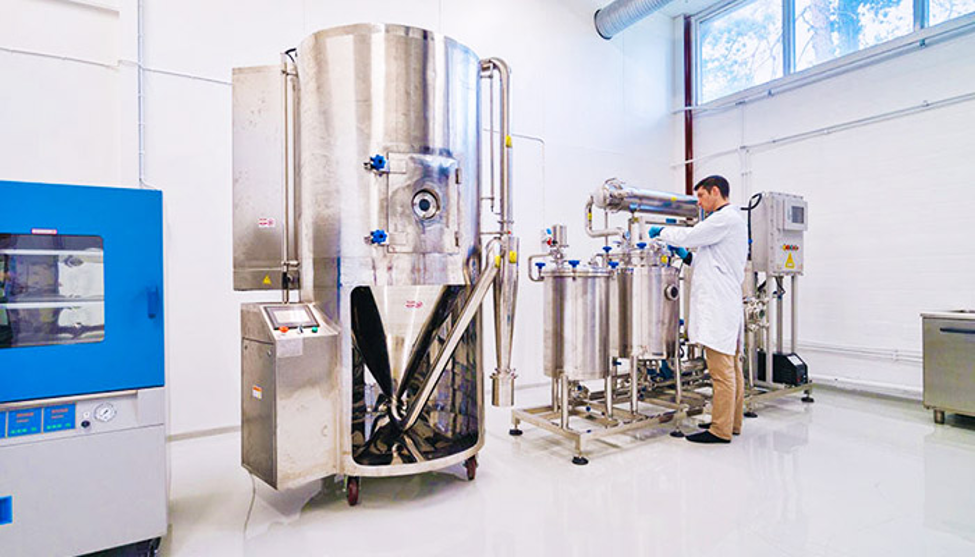
Methods of Extraction
The beneficial parts of mushrooms, like beta-d glucans, triterpenes, and sterols, are hard for humans to get their hands on.
In this case, our bodies can’t handle them because they’re “locked” inside the mushroom fruit body cell walls.
In the same way that our bodies can’t break down vegetables for fiber, we eat a lot of vegetables for roughage because our bodies can’t break them down well enough.
Mushrooms must be extracted in order to be the best they can be. This is usually done with the help of hot water or alcohol.
When these steps are done in a certain order, a dual-extracted product is made.
The extraction method is crucial because it’s the deciding factor for which chemicals are the most bioavailable.
Extraction with Hot Water
Hot water extraction is one of the common ways to make medicinal mushroom supplements.
Due to the fact that some of the most important chemicals in mushrooms are water-soluble, this is true.
The main substance is beta-d glucan, which is a type of polysaccharide that can help your immune system.
Before there were sophisticated processing machines, hot water extraction was done by simply putting tea leaves in water and letting them steep. The mushrooms were sometimes ground down to make a fine powder or chopped into small pieces to make extraction easier.
They were in hot water for a while, at least a couple of hours, to make the tea.
Now it’s on a much bigger scale.
A lot of mushroom fruit bodies are cooked in boiling water for a long time.
People often “spray-dry” the extract and make it into a fine powder that can be encapsulated or added to food, tea, coffee, or smoothies without having to do any extra work on their own.
Alcohol Extraction
It’s not easy for triterpenes and sterols, for example, to mix with water.
Alcohol should be used to increase its bio-availability.
It takes a lot of alcohol to soak the mushrooms. Then, after the liquid is dried, the remaining bits are a very fine powder.
The alcohol extracts can also be bought as a tincture.
Alcohol extraction may make some of the other therapeutic components less effective than water extracts, so it may not be as good as water extracts.
There is still a lot of work to be done to find out how effective each method is.
Dual Extraction
In the dual extraction process, both hot water and alcohol are used to extract the plant. Then, the results are combined.
There are powder and tincture versions.
It can sometimes be done by using two different processes that are then combined together.
There’s also the option to extract all at once with a water/alcohol mix.
Medicinal mushrooms’ therapeutic components are more bioavailable when they are mixed with other supplements, but there are some problems with this method.
It’s the biggest fear that these powders will have less beneficial beta-d glucans than using only hot water extracts, which are the only ones that are safe.
What About Extraction Ratio?
Concentration levels are often shown on products made from medicinal mushrooms.
You’ll see ratios like 1:1, 8:1, and so on being utilized for extraction.
100:1 is often a questionable claim because it makes the product seem more potent, which may or may not be true.
This ratio shows how much real mushroom was utilized in the final product’s creation.
If there was a 1:1 extract ratio used, this means 1 pound of mushrooms made 1 pound of extract.
However, an 8:1 ratio means that 8 pounds of mushroom fruit body had to be used to create 1 pound of extract.
Because extraction is inefficient, poor processing procedures usually lead to a better extraction ratio because extraction is inefficient.
Extracting the mushrooms’ beneficial chemicals with hot water will always try to get as much of them as possible, but the number of beneficial chemicals that can be found will depend on the fungus.
Because Reishi has a hard fruit body, only a small amount of material can be taken out of it when it is boiled in water.
Because of this, Reshi has a 16:1 ratio that can utilize a natural hot water extraction.
As a result, the fruit of Lion’s Mane is very soft, with a natural extraction ratio that is about 4:1.
The mushroom product supplement facts table lists the percentage of active ingredients in the product that allows for testing after extraction. This is much more important.

Beneficial Mushroom Compounds
All the “magic” observed in medicinal mushrooms comes from the parts that help you. These are the natural molecules that are interacting with your cells and making all of the good stuff happen with each use. This is why they’re so good for you.
A new study is always being done on functional mushrooms.
Each mushroom species may make molecules that have somewhat different shapes, which have the potential to offer various positive effects on our bodies, even in these smaller groups of chemicals.
That’s why each type of mushroom seems to have its own unique capability, or a health benefit that they might have. Here’s a list of the beneficial mushroom compounds you should know about.
1. Beta-D Glucans
Beta-D Glucans are highly studied and well-known substances found in mushrooms. It’s easy to check for the number of fungal beta-glucans in mushroom extracts, and the nutrition facts of your favorite mushroom supplement will usually show this.
Beta-d glucans are the lengthy chains of sugars that make up polysaccharides, which are molecules that have a lot of sugar in them. They’re immunomodulators, meaning they’re capable of supporting immune systems that are overactive or underactive.
2. Sterols
There are also sterols in mushrooms. Ergosterol is the most common one that people look into, but there are many more.
Ergosterol extractions are constantly being analyzed for their anti-tumor properties, and they’re also believed to offer anti-aging properties.
Vitamin D2 is made when ergosterol is exposed to sunlight. Before being sold in stores, some kinds of commercial mushrooms get UV light treatment because of this reason.
3. Terpenoids
As fat-soluble chemicals that have antiviral and antibacterial properties, terpenoids, also known as “terps” are being analyzed by researchers.
They’re also hypothesized as good for reducing inflammation.
How Do You Take Medicinal Mushrooms?
Many methods for taking functional mushrooms exist, and each has its own set of benefits and drawbacks.
That said, it’s important to know your options to ensure you pick the one that best fits your needs.

1. Mushroom Extract Powders
Extract powders are clean, flexible, and effective. This means to eat powdered mushrooms that are good for you is probably offering the most efficacy possible.
They’re also the cheapest, giving you the best value for your money.
Powders come in many species and are made by either extracting them with alcohol or extracting them with water. Or a mix of both extraction methods.
Add them to your tea, coffee, smoothies, and other foods for a quick health fix.
Quite a few mushrooms that are edible offer a neutral, earthy flavor that’s not challenging to eat.
There are some species that have very strong tastes that might not be good for people who have very sensitive palates. Cordyceps and Reishi are two of them.
However, smoothies and other dishes may be able to hide the taste.
Extract powders also facilitate dosage adjustments and mix any kind of mushroom mix you want.
Some mushroom indulgers enjoy mixing and matching different species for the additional benefits, and these powders make it a straightforward process.
2. Capsules
Capsules are easy to take, don’t need to be made, and are easy to store.
This is great because when you’re traveling, it’s essential to maintain your immune system to avoid getting sick.
Capsules with pure mushroom extract powder will be found in the best ones.
As a way to facilitate the manufacturing process, fillers or “flow aids” are often used.
If you can bypass taking pills with added ingredients, it’s usually worth the extra money or time hunting down the purest products.
It’s also good to think about how the capsule shell is made. Choose vegetable caps or “pullulan” caps that are made from plants.
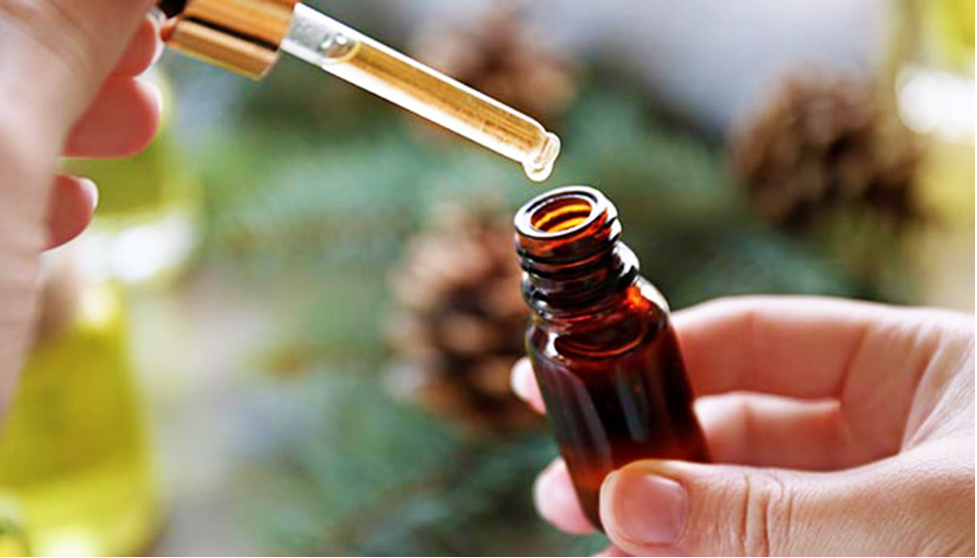
3. Mushroom Tinctures
Tinctures are also a solid option, which are just liquid mushrooms in a dropper bottle.
In tincture form, alcohol extractions are usually the most common. Dual extractions are also commonplace in this industry. The benefit of tinctures is that you have more control over your dosing and they’re rather easy to administer.
4. Whole Fresh Mushrooms
Sometimes, mushrooms are both tasty and good for you. For example, Oyster and Lion’s Mane mushrooms.
They’re a great addition to a lot of different recipes!
However, if you don’t extract these mushrooms properly, you won’t be able to get all of the benefits they have to offer.
Avoid eating your mushrooms raw because their cell walls are too hard for our bodies to digest.
5. Dried Mushrooms
Sometimes, mushrooms can be found in dried form. The dried fruiting bodies are commonly used to make mushroom extract powders.
The most effective way to use your favorite dried mushrooms is to make a hot water extraction. This involves brewing your own mushroom tea.
To make alcohol or two extractions, you can soak the fruit bodies in some alcohol for a few days.
Because the beneficial components are not bio-available, eating dried mushrooms (whole or powdered) will not be the best way to get the best health benefits from them.

6. Mushroom Infused Products
Mushroom protein powder, mushroom elixirs, mushroom collagen, and other infused products exist. Sometimes, you might even find mushroom-infused chocolates (although this usually involves magic mushrooms).
You can get mushrooms into your diet in more ways than you may have guessed!
Make sure there are enough mushrooms in the goods and that the mushrooms have been processed and extracted the right way to ensure you get the most out of them.
7. Stacking Mushrooms with Other Products
Some people prefer to mix their shrooms with other things to make a “stack.”
There are many ways to make mushroom elixirs. For example, you could put mushrooms in your coffee or mix them with superfood powders.
When Should You Eat Medicinal Mushrooms?
There has been much debate about when to eat medicinal mushrooms.
When you eat mushrooms, it doesn’t really make a difference when you do it.
Mushrooms’ main benefits are seen over a long period and when they’re consistently eaten, no matter what day it is.
You should think about whether this is something that will bother you before you eat mushrooms.
There are some fungi that have more powerful properties, like Reishi, which is one of them.
It’s a common treatment for insomnia for a lot of people or making a soothing tonic that offers relaxation properties, especially at night. However, taking it in during the daytime isn’t likely to make you sleepy.
A lot of people say that Cordyceps makes them feel more alert and energized all at once.
It has the same effect on some people like coffee. As a result, Cordyceps should be avoided at night to avoid causing you to not be able to sleep. However, not everyone reacts the same way, so it might not be important to you to know this.
By using Lion’s Mane, you may find it possible to improve your cognitive function, your creativity, and even your mental clarity. For some people, this is very intense, which means they can see and feel the difference right away.
Then again, some people may not notice the difference until they have used the product for a long time.
If Lion’s Mane contributes to increased focus during short-term utilization; thus, it’s ideal to take this mushroom or related supplements when you feel the need to focus or be creative.
Try adding some Lion’s Mane in a coffee when you have to focus on something. Perhaps schoolwork.
Dosage of Mushroom Extract
Mushroom extract doses will vary in accordance with the species
Most of the time, if you want to treat a certain issue, you should talk to a doctor or another health professional who can look at your needs and come up with a treatment plan that might help your condition.
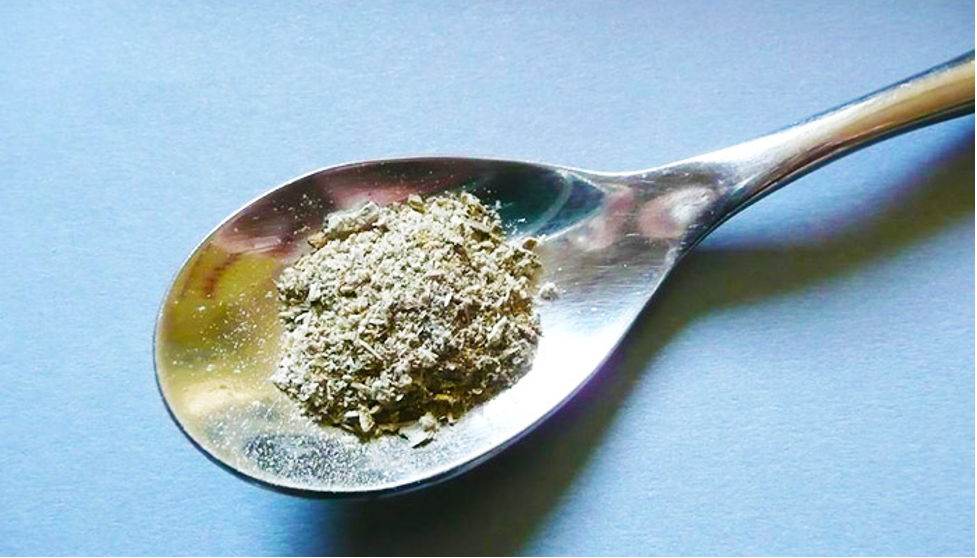
Healthy People’s Maintenance Dose
1-2 grams a day is a good amount for healthy people who want to take advantage of mushrooms’ cognitive-increasing, immunity-strengthening, or energy-increasing properties. 1 gram of our hot water extracts should be taken every day, we say.
What works best for you might change this. For some conditions, more medicine is needed.
As we said before, higher doses are usually needed in some situations to get the best results. This could range from 3 grams to as much as 9 grams every day.
Make sure you talk to a natural health practitioner or another medical professional first if you want to use this amount.
Mushrooms’ Negative Effects
Medicinal mushrooms are usually thought to be safe. Thus, they aren’t likely to hurt you if you eat them as directed.
However, some people can have bad reactions to medicinal mushrooms, such as allergies.
With this in mind, it’s best to start with any new health product or drug very slowly to make sure you don’t have a bad reaction to it.





